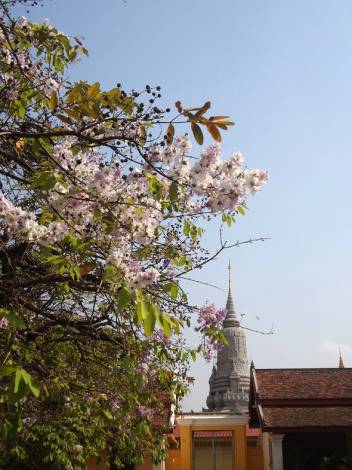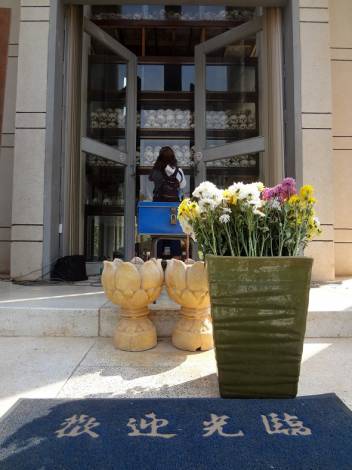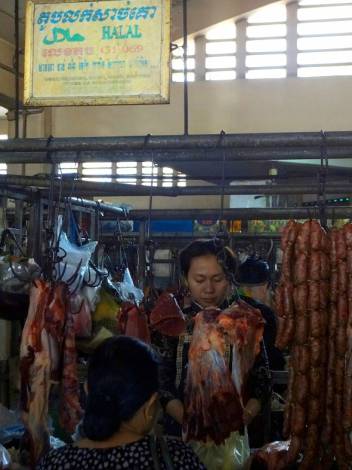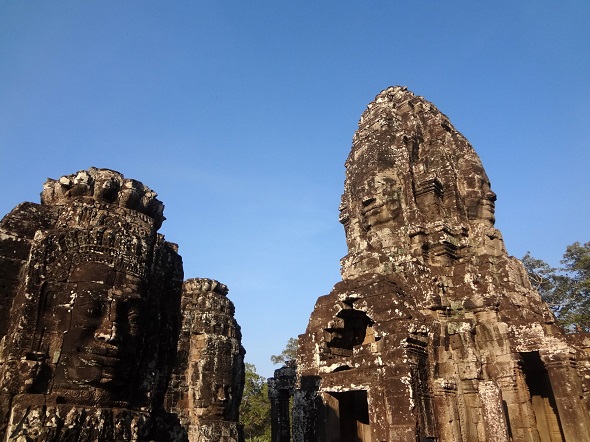At GAPBRAVE, we believe that money should not prevent young travelers from becoming the next global citizens and gears for positive change. Many students can attest to the unparalleled experience of travelling and living abroad.
In this series, GAPBRAVE features young adults with advice proving that it is possible to travel on a budget without sacrificing any adventure.
This month, we would like to introduce Billy Broderick, a recent graduate of Oberlin College and a soon-to-be graduate student. In the future, he hopes to research how humans use language, but at the moment he is doing psychological research in Guangzhou, China on a Luce Scholarship, where he spends his free time eating copious amounts of food, attempting to learn Cantonese, wandering the streets, and trying to learn to paint.
From all the places that you have been to, if you had to pick one destination to go to as a student or a young person on a budget, where would you go?
Billy Broderick: I’m going to cheat, and recommend two nearby places that I think should be done in one trip: Siem Reap and Phnom Penh, Cambodia. These aren’t particularly original suggestions (Siem Reap in particularly is incredibly international and constantly has tourists from all over the world), but they’re both very worthwhile destinations.
Why is this destination particularly student and/or budget-friendly?
Like most of Southeast Asia, Cambodia is very cheap, especially for accommodations and food, which are your two basic expenses while traveling. In Siem Reap and the more touristy parts of Phnom Penh, you will run into some higher prices than elsewhere in the country, but you’re still talking about 5 USD for a pricey meal or $10 a night for a hostel. And, while it’s always better to speak the local language, Cambodia is very easy to get around using English. Coming from China, I was surprised by the generally high level of English I encountered in Cambodia.
Can you provide three specific examples of things to do and see here on a budget?
First, in Siem Reap, you obviously have to see the temples. The Angkor Wat temple complex (in addition to the eponymous Angkor Wat, it includes dozens of other temples) is the reason people come to Siem Reap, and for good reason. It costs $20 to get a one-day pass, a price I found surprisingly high, but this lasts all day, the per-day-rate is cheaper if you get a multi-day pass, and it is undoubtedly worth it. You can rent bikes in town for several dollars and spend the entire day biking between temples, taking as much time as you like walking around them. You can also rent a guide and a tuktuk for the day, so that you can see more temples and get more background information on them. I didn’t do this, but I have friends who did and raved about the experience. You can’t really go wrong. My only regret is that I didn’t have more time to explore the temples – it’s definitely a place I’m going to return to!

The Royal Palace in Phnom Penh. A great place to see traditional Khmer temple architecture in a variety of different styles, all of which are definitely their own.
In Phnom Penh, my favorite destination was Choeung Ek, one of the killing fields used by the Khmer Rouge during their reign in Cambodia. It’s now known as the Choeung Ek Genocidal Center, and you can grab an audio guide and wander around the killing fields for an hour or so listening to the history of the killing fields and the Khmer Rouge, as well as the stories of some of the people who were killed there. It feels strange to use positive adjectives to describe Choeung Ek, because it was one of the most depressing, heart-wrenching, and moving places I’ve ever visited, but it’s a location I think everyone should visit.
The contrast of the accomplishments and grandeur of Angkor seen at Siem Reap with the terrible brutality of the Khmer Rouge at Choeung Ek is disturbing in itself. You need to rent a tuktuk from Phnom Penh, but even with that cost, it’s still very budget-friendly. I recommend going in the morning, right after it opens, when there are fewer people, because it’s really something that should be experienced alone.

The stupa in the center of Choeung Ek, containing all of the skulls of the people buried at this Killing Field. It’s not big enough to hold all of the bones, despite being two or three stories tall. And I found that Welcome mat, which greets you whenever you walk into a convenience store in China, to be so incredibly out of place.
Finally, I recommend just wandering around Phnom Penh. I’m a big fan of walking randomly through cities, and Phnom Penh, at about 2 million people, is a good size to do that in. You can easily walk through several parts of the city in a day, passing interesting temples, markets, and restaurants on the way. And then if you’re too tired to walk back, you can get a mototaxi or a tuktuk home, as both of them are pretty cheap.
Do you have any recommendations on where to eat here on a budget?
Just about anywhere is fine. Even a pricey meal in Cambodia will only be around $5. But I’d recommend the small roadside restaurants that you see everywhere. If you see a bunch of small chairs and tables outdoors under an awning or in a small room, you’re in the right kind of spot. I especially enjoyed Cambodian breakfast, either a simple meal of pork and rice or a type of rice porridge similar to Chinese congee. It’s definitely possible to just eat international food while you’re in Cambodia, and there appears to be a strange split between places where foreigners eat and where locals eat, but I recommend finding a random place filled with lots of people that serves food you don’t recognize.

A halal butcher in the Central Market, Phnom Penh. I love walking through markets, especially food ones, filled with the bustle of people going about their daily business and tons and tons of interesting food.
What about accommodation? Any suggestions?
I stayed with friends in Phnom Penh, but for Siem Reap, we found several promising places using hostelworld.com and airbnb.com. Those tend to be the two sites I check for places to stay, depending on what kind of place I want. Hostelworld lists mainly hostels, so they tend to be cheaper and provide all of the amenities you’d expect of a hostel, but people list their own spaces on Airbnb, so you stay with someone who lives in the area, allowing you to get more local recommendations and a different view of the place than if you stayed in a hostel with a bunch of other tourists. I’ll often check both to see what looks promising.
Do you have any general recommendations for students abroad or those traveling on a budget?
For me, it’s very important that I find the right balance while I travel, in just about all facets. The balance between being on the move, seeing the touristy sights, and taking it slowly, sitting in a café or restaurant for several hours. The balance between talking with the people around me and having my own space. The balance between pushing myself out of my comfort zone and taking time to recuperate. The balance between taking gratuitous amounts of photos and trying to be in the moment, enjoying where I am. The one thing I don’t seek balance in is the trying of new versus familiar food and drink – I love to constantly try things I’ve never eaten or even heard of before. But that’s me, and if that taste of home is necessary for you, that balance is still important. This gets more and more important the longer you’re traveling, but it’s something that I think travelers should always be aware of.

A little child sleeping in another, smaller market in Phnom Penh.
Read about Billy’s travels at chinaandbackagain.blogspot.com.

